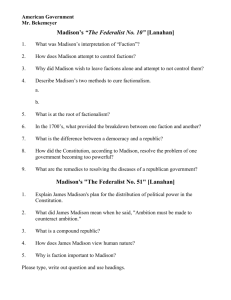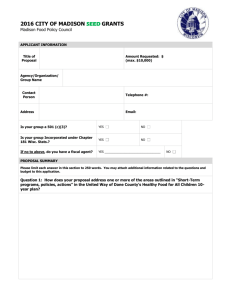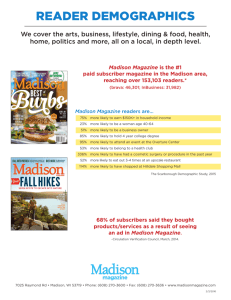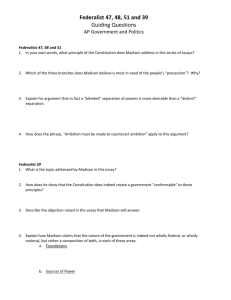Unit 2 Content Guide
advertisement
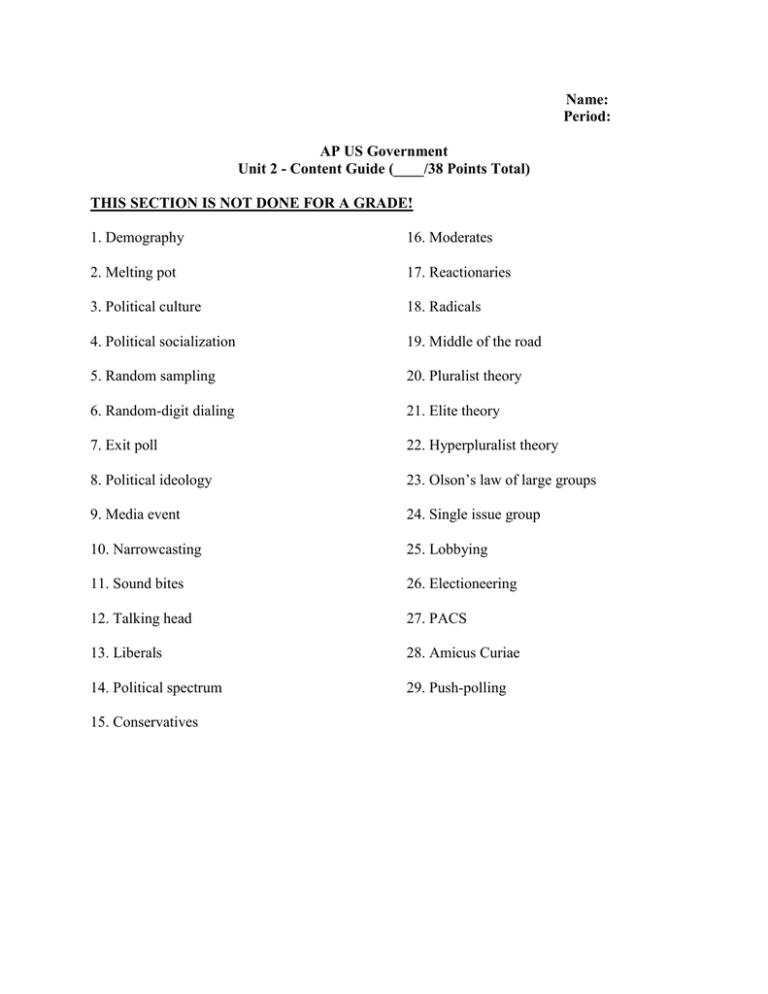
Name: Period: AP US Government Unit 2 - Content Guide (____/38 Points Total) THIS SECTION IS NOT DONE FOR A GRADE! 1. Demography 16. Moderates 2. Melting pot 17. Reactionaries 3. Political culture 18. Radicals 4. Political socialization 19. Middle of the road 5. Random sampling 20. Pluralist theory 6. Random-digit dialing 21. Elite theory 7. Exit poll 22. Hyperpluralist theory 8. Political ideology 23. Olson’s law of large groups 9. Media event 24. Single issue group 10. Narrowcasting 25. Lobbying 11. Sound bites 26. Electioneering 12. Talking head 27. PACS 13. Liberals 28. Amicus Curiae 14. Political spectrum 29. Push-polling 15. Conservatives A. Chapter 6 “Public Opinion” (____/11 ½) 1. What is the science of demography? 2. What were the three great waves of immigration in the United States? a. b. c. 3. How is the ‘minority-majority” affecting America? 4. What is the largest minority group in America? 5. How is the immigration issue impacting politics in the American southwest? 6. What is the purpose of the Simpson-Mazzoli Act? 7. How has Asian immigration differed from Hispanic immigration? 8. Have the new immigration laws stemmed the tide of illegal immigration? Explain 9. How have the following demographic changes affected political changes? Regional shifts Graying of America 10. Of the above two, which one has impacted the re-apportionment of Congress? 11. What is it called when one learns about politics? 12. How do each of the following impact political socialization? Family Mass Media Schools Peers 13. Which of the above impacts political socialization the most? 14. How does political participation change during the aging process? 15. How does one detect one’s public opinion? 16. What makes public opinion a scientific device? 17. How does one make public opinion polling cost-effective? 18. Describe three criticisms of public opinion polls? a. b. c. 19. Why has there been such a decline in the trust in government? 20. What comprises a political ideology? Radical Reactionary Issue Size of Government International Diplomacy Social Policies Economic Priorities Use of Force 21. How does the gender gap impact American politics? Liberal Conservative 22. Describe seven ways Americans participate politically? a. c. e. b. d. f. g. 23. Who has a tendency to participate more? B. Chapter 7: Mass Media and the Political Agenda pp. 211-238 (____/9) 1. What is the purpose of a media event? 2. What is the purpose of the media? 3. List the seven principles of Ronald Reagans’ use and abuse of the media. a. c. e. b. d. f. g. 4. What media technique do presidents use today to deliver their message? 5. What form of media became very prominent during the 1960s? What two events brought this media to the forefront of journalism? 6. Cite three ways the FCC regulates the media: a. b. c. 7. How has “narrowcasting” changed the focus of “broadcasting?” 8. Does anyone “own” the media? How is that possible? 9. How has the internet changed the presentation of the news? 10. What is a blogger? 11. Why are newsmakers so tied to the media and vice versa? 12. What is a sound bite? 13. How do newsmakers utilize trial balloons? 14. Is the news biased? 15. How do newsmakers control public opinion? 16. What are five items in the “policy entrepreneurs” arsenal of weapons? 17. How do the media act as a “watchdog”? 18. What historical event made the media suspect of politicians in power, establishing today’s adversarial relationship between the media and those in power. C. Chapter 11 – Interest Groups – pp. 323-350 (____/5 ½) 1. What is the purpose of an interest group? 2. Describe two factors that distinguish interest groups from political parties a. b. 3. Which of the political theories described in Chapter One aligns itself with interest groups? 4. What makes an interest group successful? Why do smaller groups have an advantage over larger groups? 5. What is the difference between a potential group and an actual group? 6. What is Olson’s Law of large groups? 7. What are four general strategies used by interest groups to shape public policy? a. c. b. d. 8. What are four ways a lobbyist can assist a politician? a. c. b. d. 9. Why does PAC money go so overwhelmingly to incumbents? 10. What are four different types of interest groups? a. c. b. d. 11. What was James Madison’s solution to dealing with interest groups? D. Lanahan Readings: pp 88-95: Dahl’s “Who Governs, A Preface to Democratic Theory” (____/5) 1. What is the difference between the political stratum and the apolitical stratum? 2. According to Dahl, how is power distributed in America? 3. Who is holding the political leader captive? 4. Why are relationships between leaders and constituent reciprocal? 5. Who constitutes the political stratum? 6. What are some of the political qualities of the apolitical strata? 7. Can anybody break into the political stratum? How? 8. Why would a political elite deal with certain issues? Is this the same self-interest the founding fathers believed in? 9. What comprises the making of governmental decisions? 10 What is at the core of political decision making? E. Lanahan’s pp. 49-55: Madison’s “The Federalist No. 10”(___ 4 ½) 1.What was Madison’s interpretation of “Faction”? 2. How does Madison attempt to control factions? 3. Why did Madison wish to leave factions alone and attempt to not control them? 4. Describe Madison’s two methods to cure factionalism. a. b. 5. What is at the root of factionalism? 6. In the 1700’s, what provided the breakdown between one faction and another? 7. What is the difference between a democracy and a republic? 8. How did the Constitution, according to Madison, resolve the problem of one government becoming too powerful? 9. What are the remedies to resolving the diseases of a republican government? F. Lanahan pp. 461-463 De Tocqueville’s “Democracy in America” (___/2½) 1. What did De Tocqueville find so unique about American special interest groups? 2. What is an association? 3. What are three functions of an association? a. c. b. d. 4. Why are there no conspiracies in America? 5. Why is the right to join an association considered to be a natural right?
